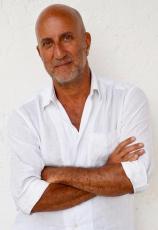The Last Templar
Review
The Last Templar
Scratch deeply enough under the veneer of a conspiracy theory, and you inevitably will find the Knights Templar at or near the source. At one point answerable only to the Popes of the Roman Catholic Church, the Knights became answerable just to themselves and ultimately fell out of favor with the Papacy. Stories, accounts and legends, often conflicting, surround the Knights Templar and concern everything from lost treasures to knowledge --- and power --- secretly preserved and handed down from generation to generation.
THE LAST TEMPLAR, the debut novel of Raymond Khoury --- a respected television and film scriptwriter --- centers on a secret of the Knights Templar that (it is rumored) is of such weight and bearing that its revelation will rock the world.
The novel is full of water cooler moments. For example, after reading just a few pages you will never walk past New York's Metropolitan Museum of Art again without looking toward Central Park in expectation of seeing four foreboding mounted knights riding out, lances at the ready. The occasion that brings the knights out of the woods is the unveiling of an exhibit entitled "The Treasures of the Vatican," or, more specifically, one of those treasures: an artifact that is the key to unlocking a centuries-old secret that has the power to bring down Christianity. The knights invade the Metropolitan, make off with the artifact, and the chase is on.
An FBI investigation is led by anti-terrorist specialist Sean Reilly. Soon, he and archaeologist Tess Chaykin are drawn into the dark, hidden history of the crusading Knights, and become involved in a deadly game of cat and mouse with ruthless killers as they race across three continents to recover the lost secret of the Templars.
Everyone has an agenda: there are those who want to reveal the secret to the world, those who want to maintain the status quo, and those who…well, they're not sure. Khoury does an excellent job of presenting arguments for both positions, even as opposing sides line up with equal degrees of ruthlessness to ensure that what they want to see happen will indeed occur. At the same time Khoury intermittently but smoothly takes the reader back into time, relating historical events of the late thirteenth and early fourteenth centuries through a fictional glass and ultimately uncovering the truth behind the revelation that some want to make known and others want to conceal.
Khoury's extensive screenwriting experience holds him in good stead here. His narrative vision is cinematic in scope, so the story unfolds like a seamless film reel across the imagination. Any reader encountering THE LAST TEMPLAR will want 1) a film version, and 2) more novels from Khoury, not necessarily in that order. Recommended.
Reviewed by Joe Hartlaub on November 28, 2006





